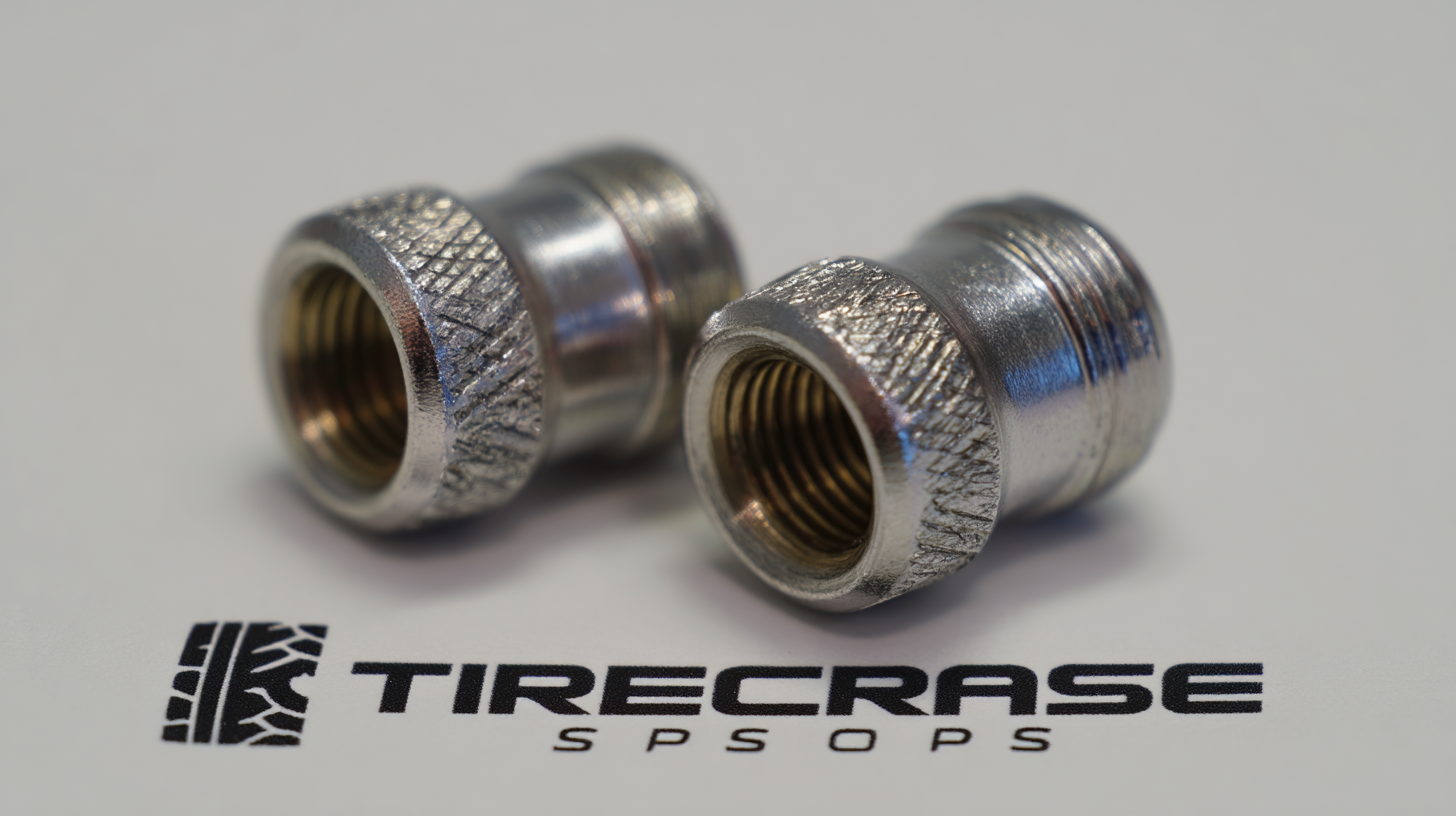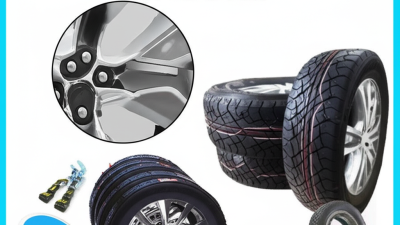Maintaining optimal tire pressure is crucial for vehicle safety, fuel efficiency, and tire longevity. A report from the National Highway Traffic Safety Administration (NHTSA) indicates that under-inflated tires can decrease fuel efficiency by up to 3% for every 1 psi drop in pressure, ultimately leading to higher fuel costs and increased greenhouse gas emissions. Furthermore, the Environmental Protection Agency (EPA) suggests that properly inflated tires can improve safety by reducing the likelihood of tire blowouts. One of the effective solutions for consistently achieving optimal tire pressure is the use of Tire Pressure Caps. These innovative devices not only help to monitor tire pressure but also ensure that pressure levels remain stable over time, allowing drivers to maintain tire integrity and performance. In this blog, we will explore the significance of Tire Pressure Caps and how they can streamline tire maintenance while contributing to safer and more economical driving experiences.

Maintaining optimal tire pressure is crucial for ensuring vehicle safety, enhancing fuel efficiency, and prolonging tire life. According to the National Highway Traffic Safety Administration (NHTSA), under-inflated tires can reduce fuel efficiency by up to 3% per PSI drop in pressure. Hence, using the best tire pressure caps can significantly contribute to consistent tire maintenance. These specialized caps often feature built-in gauges that allow drivers to easily monitor tire pressure, providing a practical solution for regular checks.
Tips for maintaining optimal tire pressure include checking pressures at least once a month and before long trips. Tire pressure can fluctuate due to temperature changes, with the NHTSA reporting that for every 10-degree drop in temperature, tire pressure decreases by about 1 PSI. Therefore, it is vital to be proactive, especially during seasonal transitions. Additionally, investing in high-quality tire pressure caps can help seal the valve stem more effectively, preventing air leaks that could lead to flat tires.
Moreover, proper tire maintenance goes beyond just monitoring pressure. Rotating your tires every 5,000 to 7,500 miles not only ensures even wear but also supports better handling and performance. Combined with the use of reliable tire pressure caps, these practices contribute to a safer and more efficient driving experience.
Maintaining correct tire pressure is crucial not just for vehicle performance but also for safety and fuel efficiency.
According to the National Highway Traffic Safety Administration (NHTSA), under-inflated tires are a significant factor in approximately 11,000 accidents each year, resulting in injuries and fatalities.
Properly inflated tires enhance traction, handling, and braking, which directly contribute to safer driving experiences.
Furthermore, the Environmental Protection Agency (EPA) states that keeping tires inflated to the optimal pressure can improve fuel efficiency by up to 3.3%.
This translates to savings of about $0.13 per gallon of gasoline and reduces carbon emissions by 1.6 billion pounds annually.
With such significant benefits at stake, utilizing tire pressure caps that monitor and maintain optimal inflation becomes essential.
These innovative devices offer real-time pressure notifications, ensuring that drivers can address any issues promptly and maintain the economic and safety benefits associated with properly inflated tires.
Maintaining optimal tire pressure is crucial for vehicle performance, fuel efficiency, and safety. Tire pressure caps play a pivotal role in this aspect by providing a simple yet effective solution for monitoring and maintaining tire pressure levels. These caps are designed to alert drivers when tire pressure falls below the recommended levels, ensuring that vehicles operate at peak performance. By using advanced technology, tire pressure caps can enhance the user experience, allowing drivers to focus on the road while having peace of mind regarding their tire health.
In the automotive industry, safety is paramount, and properly inflated tires significantly reduce the risk of blowouts and accidents. Tire pressure caps contribute to this safety by promoting regular checks and encouraging drivers to adopt proactive maintenance habits. In addition, maintaining the correct tire pressure not only enhances vehicle stability and handling but also improves fuel efficiency, which is an essential factor in today's eco-conscious market. By integrating tire pressure caps into routine vehicle care, drivers can contribute to a safer driving environment while benefiting from long-term cost savings.
| Tire Pressure Cap Type | Material | Pressure Range (PSI) | Temperature Range (°F) | Durability (Cycles) | Warranty (Years) |
|---|---|---|---|---|---|
| Standard Rubber Cap | Rubber | 30-35 | -40 to 120 | 1000 | 1 |
| Heavy-Duty Metal Cap | Aluminum | 30-40 | -30 to 150 | 5000 | 3 |
| Smart Pressure Monitoring Cap | Plastic | 25-45 | -40 to 130 | 2000 | 2 |
| Eco-Friendly Cap | Biodegradable Plastic | 30-36 | -20 to 125 | 1500 | 1 |
Maintaining optimal tire pressure is essential for vehicle performance, particularly in terms of fuel economy. Underinflated tires can significantly hamper efficiency, causing drivers to experience higher fuel consumption and increased emissions. Studies indicate that for every 1 PSI drop in tire pressure, fuel efficiency can decrease by up to 3.3%. As such, understanding and monitoring tire pressure is crucial for both safety and cost-effectiveness.

The importance of tire pressure management is underscored by the projected growth of the automotive tire pressure monitoring system (TPMS) market, which is anticipated to reach USD 8.76 billion by 2033, growing at a CAGR of 11.50%. This indicates a growing recognition of the role that technology plays in driving fuel efficiency and overall vehicle maintenance. Furthermore, capturing accurate tire data during vehicle service can help fleet managers better understand tire usage patterns and optimize maintenance schedules, thereby minimizing the risks associated with underinflation.
As the smart tire market continues to evolve, integrating advanced technologies such as tire pressure monitoring and data analytics will be pivotal in enhancing fuel economy and reducing operational costs. With the correct tools and insights, drivers and fleet managers alike can ensure their vehicles operate at peak efficiency, ultimately benefiting both the environment and their bottom line.
As the world grapples with rising carbon dioxide (CO2) levels due to global warming, the automotive industry is stepping up with innovative solutions for sustainability. One such advancement lies in the development of tire pressure caps made from eco-friendly materials. These tire pressure caps not only serve a practical function by ensuring optimal tire inflation but also contribute to reducing the carbon footprint of vehicles. By maintaining the right tire pressure, drivers can enhance fuel efficiency, leading to lower emissions.

Tips for maintaining tire pressure include regularly checking the pressure using a reliable gauge, especially before long trips or seasonal changes. It's also beneficial to invest in smart tire pressure caps that provide real-time updates on tire health, allowing for immediate action when needed. Additionally, keeping an eye on tread wear can help you pre-emptively address issues that could lead to improper inflation.
Advancements in tire pressure cap materials reflect a broader commitment to sustainability. As manufacturers explore new, sustainable materials that minimize environmental impact, consumers are encouraged to consider both performance and eco-friendliness in their vehicle maintenance choices. The integration of such innovations not only boosts vehicle performance but also aligns with global efforts to tackle climate change.






TradeManager
Skype
VKontakte

